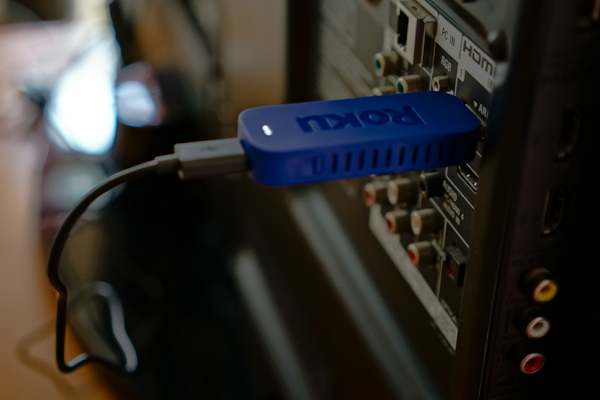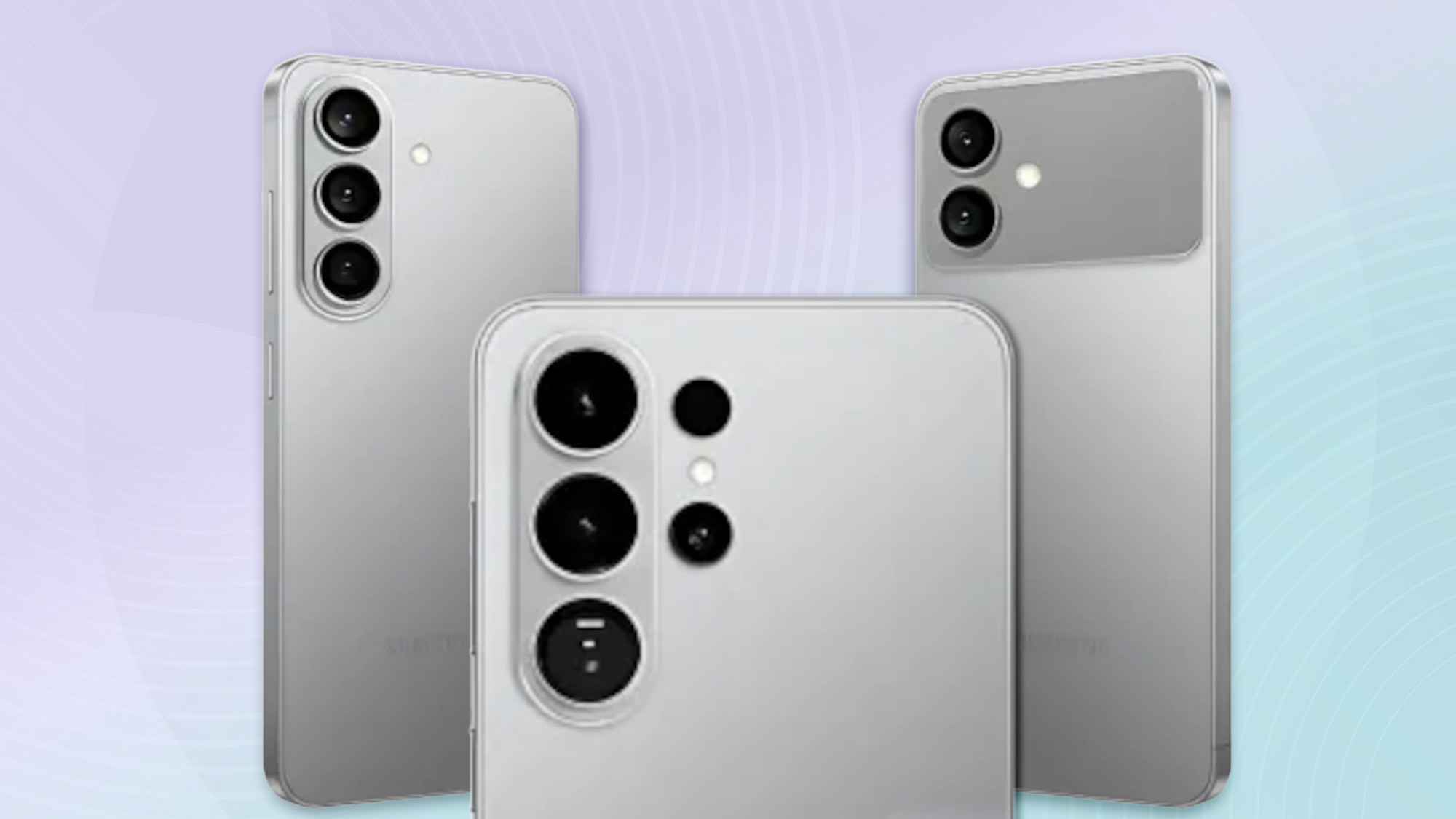Roku Sticks It to Chromecast with $50 Streaming Stick
Roku’s new Streaming Stick plugs into your TV via HDMI and provides most of the features of the top-end, $100 Roku 3, including a remote.

It would be easy to call Roku’s new $49 Streaming Stick a knee-jerk reaction to the $35 Google Chromecast. Both plug into a TV's HDMI port, are powered by a USB charger, and deliver streaming video, such as Netflix, to a TV. But the Roku Streaming Stick offers a lot more for the extra $15. In fact, this device is far closer to the $99 Roku 3.
Like its big brother, the Roku Streaming Stick (available in April in the U.S., UK and Canada) offers the company's full assortment of more than 1,200 Channels, vs. the 14 Chromecast apps currently available (though more are coming). Admittedly, many of them are niche – such as Cowboy Classics and Zombie TV. But Roku does have a better selection of mainstream channels than the $99 rival Apple TV. Beyond regulars like Netflix, Hulu Plus and HBO GO, Roku has Amazon Prime Instant Video, Vudu, Redbox Instant and others. (An upgraded Apple TV is rumored to come soon, however.)
MORE: 7 Things the Next Apple TV Needs
The main difference between the Roku Streaming Stick and the Roku 3 is the RF remote control. The model bundled with the stick lacks a headphone port for private listening, as well as accelerometers that allow it to be a game controller for titles like "Angry Birds." Like the other Roku devices, the Streaming Stick can also be controlled from a mobile app. The Stick also lacks the Roku 3's USB port for playing videos from a USB drive.
Oddly, the product Roku is announcing today could have easily debuted two years ago. That's when Roku introduced its first Streaming Stick ($70, without remote). But that device worked only with TVs and devices such as Blu-ray players that had a port called MHL — essentially an HDMI port that also provides power. Roku says it has 14 partners making 60 products that it has certified to work with the old MHL stick, but they are less popular brands (at least in the U.S.), such as Hisense, Insignia and Hitachi. Roku's new stick, in comparison, should work on any device with a plain-old HDMI port, for $20 less, with a remote control. Roku is no longer selling the MHL model but is bundling it with devices made by its partner companies.
More video-casting options coming
Like the Roku 3, the Stick will also support a Chromecast-like feature called Send to TV, which allows you to sync the Roku device with Netflix or YouTube mobile apps to play the same streams as are playing on an iOS or Android device. (Since Netflix and YouTube are already on the Roku box, the utility is less exciting than it might be.)
Like the current Roku boxes and the old Streaming Stick, the new stick will also support what's called Play on Roku, which allows the Android and iOS mobile apps to stream music and photos stored on the mobile device, along with videos that they shot on the mobile device, to a Roku box and the TV it's connected to. That feature pales, however, in comparison to Apple's AirPlay, which casts the exact contents of an iOS device or Apple computer screen (as well as audio) to a television via Apple TV.
Get instant access to breaking news, the hottest reviews, great deals and helpful tips.
MORE: How to Stream Video to Your TV
Roku told us that it plans to expand the video-casting abilities. "Adding more casting features is on the roadmap," Roku's chief marketing officer, Matthew Anderson, told Tom's Guide. First, the company plans an update sometime this year that brings Send to TV to its other set-top boxes. In addition, Anderson said that Roku is "looking at ways to cast from a laptop," as currently only iOS and Android devices have that capability.

In the future, Roku may allow slinging the exact contents of a device onto the TV, as AirPlay does, Anderson said, but he couldn't tell us much more about it. In the past, Roku has told us that it would enable an AirPlay-like technology standard called Miracast, but in our latest conversation, Anderson said only that Miracast would be one possible way of allowing streaming. The Miracast standard is rather poorly and spottily implemented in PCs and especially Android devices, which may explain Roku's hesitancy.
Outlook
If Roku already appeals to you, the Streaming Stick should be a no-brainer. For a few dollars more than Chromecast, you get a much richer feature set - including probably more video and music channels than you could ever even try out, as well as a well-designed remote. And like Chromecast, the Roku Streaming Stick hides out of the way behind the TV. However, if you want a remote equipped with a headphone port or an accelerometer for playing games, look to the Roku 3 ($99.99) or Roku 2 ($79.99). A revamped Apple TV is almost certainly coming soon, but it's unlikely to expand its current lineup of about 30 apps to anything near Roku's 1200+ (and growing) channel lineup. (It's unlikely to add even popular services like Amazon that Apple sees as competitors.) If content selection, price or both are priorities, the Roku Streaming Stick is your best bet.
Follow Sean Captain @seancaptain and on Google+. Follow us @tomsguide, on Facebook and on Google+.
Sean Captain is a freelance technology and science writer, editor and photographer. At Tom's Guide, he has reviewed cameras, including most of Sony's Alpha A6000-series mirrorless cameras, as well as other photography-related content. He has also written for Fast Company, The New York Times, The Wall Street Journal, and Wired.
-
jasonelmore Just another streaming solution. Its sad it took them 2 years to make it, when they should have made this to begin with, and then by now, they should have HDMI passthrough.Swapping inputs is annoying as hell. Learn from what Xbox One does and passthrough your cable/satellite/gaming console through the stick, with a ui overlay. Then add voice commands a year later.Reply -
lightofhonor "The Roku Steaming Stick challenges the Roku 3 box, which costs twice ass much."lolReply -
Northwestern "The Roku Steaming Stick challenges the Roku 3 box, which costs twice ass much."Proof-readers asleep on the job againReply -
Citizen XVIII Pro's for Roku:Dedicated remote (if you prefer one)On-screen interfaceMore appsPros for Chromecast:Mobile device for remote (if you prefer that)Streaming is tied to mobile device, not ChromecastStream anything from Chrome browserI'll stick with the Chromecast. I have plenty of remotes to juggle, and I like being able to take my episode with me on my tablet when I leave the room, it's tied to my device, not to the Chromecast.Reply -
phrancis I recently gave away my Roku because I enjoyed Chromecast's ability to play Youtube and cast whole web pages to the TV. Ok, Roku had more channels, but most were pretty crappy. Chromecast had the same core "channels" that we all wanted and while it didn't have a remote, let's be honest, most of us are in front of the tube surfing on our phones and tablets anyways. Might as well use those devices to control what's on the tv...Reply -
Trustdesa Shame that ROKU service is crap...they never support older product, worse than Apple does!Reply -
damianrobertjones There's a lot of bored people out there. Just take your tablet with as, I'm sure, that you already have one. Or, heck, your phone. Devices like this are just there to satisfy our need to mess around and throw money at something we already, pretty much, own.Muhh. Then again... If you're happy then fair enough.Reply
